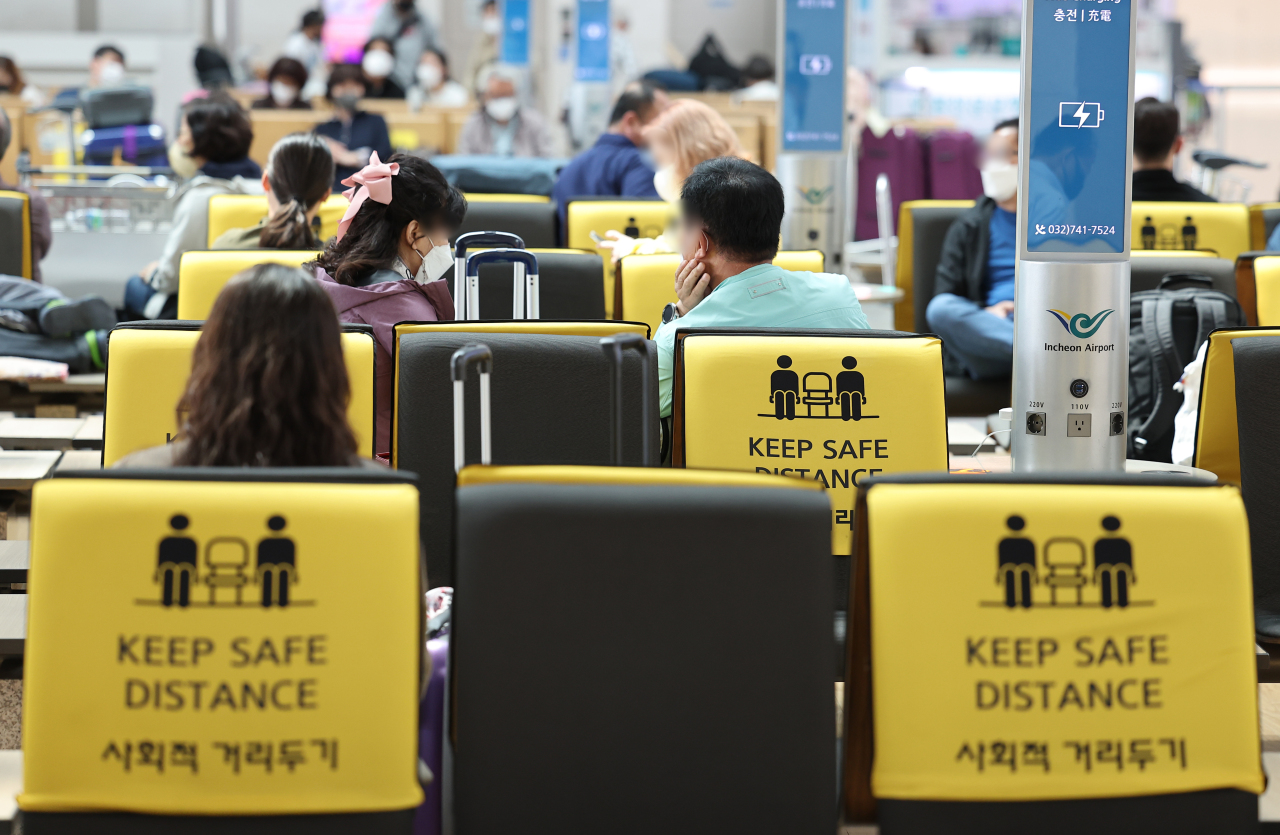[Exclusive] Korea sequenced less than 0.1% of cases over omicron outbreak
Scant surveillance risks losing sight of highly probable Korean COVID-19 lineage, experts warn
By Kim ArinPublished : April 14, 2022 - 14:30

South Korea has conducted whole-genome sequencing on less than 0.1 percent of cases that occurred over its omicron outbreak to date, far below the World Health Organization’s recommendation of 5 percent.
The lack of surveillance means Korea may lose sight of the next concerning variant coming its way, and let that variant spread undetected in the community, experts warn.
The Korea Disease Control and Prevention Agency said in a written response to The Korea Herald on Wednesday afternoon, “Since omicron began to dominate in January, 12,107 counts of whole-genome sequencing have been carried out to date, and among them one recombinant variant was confirmed, the XL.”
This means that Korea has sequenced only around 0.08 percent of nearly 15 million cases that were confirmed here since January.
Korea is lagging behind other countries in variant surveillance, according to data from GSAID, the global database for sharing SARS-CoV-2 genome sequences.
GSAID data updated Wednesday showed Korea had submitted only 6,687 omicron sequences, which compares with the UK’s 1,054,541, the US’ 820,206, Germany’s 183,813, Japan’s 65,719 and Australia’s 34,704. In terms of overall sequencing rate, Korea ranked 106th in the world, at 1.87 sequences per 1,000 cases.
Korea, which has seen one of the highest omicron rates globally, faces greater risks of new variants emerging than elsewhere in the world, according to Dr. Paik Soon-young, a professor emeritus of microbiology at Catholic University of Korea.
He said BA.1, the original omicron virus, and its “sister” BA.2 circulated together for much longer here than in other countries. “Naturally that greatly raises the risk of the two widely circulating variants recombining and spawning new versions of themselves,” he said, refuting the KDCA’s earlier assessments.
Lee Sang-won, head of the KDCA’s epidemiological analysis team, said during Tuesday’s briefing that, “Despite substantial monitoring the incidence of a recombinant variant, which is a merge of two strains, appears to be low in Korea.” “While BA.1 and BA.2 circulated at the same time in Korea, the overlapping period was relatively short compared to other countries,” he said.
But Paik pointed out BA.1 and BA.2 overlapped for a longer period here than in other countries. After the first cases of BA.2 cases were found here in the last week of January, BA.2’s share rose steadily to account for more than 50 percent of analyzed cases by the third week of March.
“BA.1 still makes up around 15 percent of analyzed cases according to recent KDCA reports. In March the shares of BA.1 and BA.2 were about 50-50,” he said.
“In Korea more so than in other countries, there are higher probabilities of a new variant with novel combinations arising, which makes extensive monitoring crucial. Prior variants of concern were imported, but now one might be brewing right here at home.”
Officially, Korea has managed to spot just one case of a recombinant variant of omicron’s BA.1 and BA.2. There are more than a dozen types of BA.1-BA.2 recombinant variants reported worldwide so far. Korea has also yet to identify any cases of BA.4 or BA.5, new subvariants that are already beginning to take over in some parts of the world.
Dr. Hong Kiho, a laboratory medicine specialist at Severance Hospital, agreed that the omicron situation here was “rife with the potential for a Korean COVID-19 lineage to be born.”
He said surveillance is harder now, with so many different versions of omicron. “The entire sequence needs to be scrutinized, whereas before we could skip some processes and look at parts of the virus, like its spike,” he said.
He also called for more infrastructure and workforce to interpret the sequencing data.
The country’s capacity has “probably reached its limits with off-the-chart rates of cases,” he said.
Infectious disease professor Dr. Kim Woo-joo of Korea University said viral genetic sequencing was a “key part of pandemic response to find out which variants are circulating in the population, which particular variants are prevalent, and to what extent they might be able to evade immunity.”
“Without enough sequencing and testing we wouldn’t know which virus we are fighting against,” he said.
By Kim Arin (arin@heraldcorp.com)







![[Graphic News] More Koreans say they plan long-distance trips this year](http://res.heraldm.com/phpwas/restmb_idxmake.php?idx=644&simg=/content/image/2024/04/17/20240417050828_0.gif&u=)
![[KH Explains] Hyundai's full hybrid edge to pay off amid slow transition to pure EVs](http://res.heraldm.com/phpwas/restmb_idxmake.php?idx=644&simg=/content/image/2024/04/18/20240418050645_0.jpg&u=20240419100350)






![[From the Scene] Monks, Buddhists hail return of remains of Buddhas](http://res.heraldm.com/phpwas/restmb_idxmake.php?idx=652&simg=/content/image/2024/04/19/20240419050617_0.jpg&u=20240419175937)

![[KH Explains] Hyundai's full hybrid edge to pay off amid slow transition to pure EVs](http://res.heraldm.com/phpwas/restmb_idxmake.php?idx=652&simg=/content/image/2024/04/18/20240418050645_0.jpg&u=20240419100350)

![[Today’s K-pop] Illit drops debut single remix](http://res.heraldm.com/phpwas/restmb_idxmake.php?idx=642&simg=/content/image/2024/04/19/20240419050612_0.jpg&u=)